| |
Aramchol in NASH Phase 3; Expanded Access
|
| |
| |
The ARMOR study is a phase 3, multinational clinical trial to evaluate the efficacy and safety of Aramchol™ for adults with NASH and liver fibrosis.
Expended Accsess Policy
Galmed reports interim results from the Open-Label part of the ARMOR study with Aramchol showing robust fibrosis improvement across multimodality histological assessment
- Treatment with Aramchol 300mg BID resulted in a high rate of subjects with fibrosis improvement using NASH CRN, paired ranked reading and Artificial Intelligence (AI) quantitative digital analysis.
- At week 48, both paired and AI evaluations identified more subjects with fibrosis improvement (65% and 100% respectively) compared to NASH CRN scoring.
TEL AVIV, Israel, April 28, 2022 /PRNewswire/ -- Galmed Pharmaceuticals Ltd. (NASDAQ: GLMD) ("Galmed" or the "Company"), a clinical-stage biopharmaceutical company for liver, metabolic and inflammatory diseases announced today interim results from the Open-Label Part of the ARMOR study showing fibrosis improvement with Aramchol using multimodality histological assessment.
The Open-Label Part of the ARMOR study was designed to explore the kinetics of histological outcome measures as a function of treatment duration. Acknowledging the complexity, variability and moderate reproducibility in liver pathology reading, this part was also used to further assess different methodologies that may support and improve fibrosis scoring, in preparation for the registrational double-blind, placebo-controlled part of the study. All slides were assessed using three histopathological reading methodologies. A central pathology committee scored the biopsies according to the conventional, formal, NASH CRN scoring system (F1-F4).
Since paired reading may best reflect real-world pathological assessment, the same central committee was also asked to perform a ranked assessment (improvement/worsening/stable) of paired (pre and post treatment) biopsies, scrambled and blinded to sequence. This allows identifying fibrosis improvement that may be missed by the formal scoring as well statistical quantification of change from baseline.
An automated and continuous score of Fibrosis Composite Severity (FCS) was established for the same slides using FibroNest™, a quantitative Digital Pathology image analysis and artificial intelligence (AI) method. This allows identifying fibrosis improvement that may be missed by the formal scoring as well statistical quantification of change from baseline.
Results of post baseline biopsies performed either at 24 weeks or at 48 weeks from 46 subjects with NASH and F1-3 that received Aramchol support the anti-fibrotic effect of Aramchol and reinforce the favorable safety profile of Aramchol.
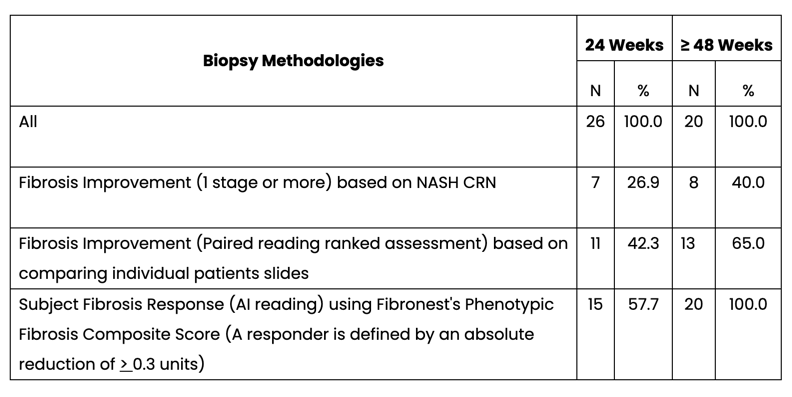
Treatment with Aramchol 300mg BID resulted in a high rate of subjects with fibrosis improvement across the three pathology reading methods. Both paired and AI evaluations identified more subjects with fibrosis improvement, indicating greater sensitivity to detect change. For all methods, a treatment effect was larger at 48 compared to 24 weeks. AI analysis showed mean FCS reduction was -0.62 (p=0.017) at Wk24 and -1.74 (p<0.0001) at Wk>48.
Allen Baharaff, Co-founder, President and CEO of Galmed commented "The results we are announcing today reinforce the robust anti-fibrotic effects of Aramchol observed to date. The Open-Label Part of the study continues to provide valuable information for optimization of our clinical development program. Galmed remains in the forefront of the scientifical efforts to re-assess and improve biopsy reading methodologies, for future benefit of NASH clinical trials".
About ARMOR Study
ARMOR is a Phase 3 study comprised of two-parts, an open-label part and a randomized, double-controlled, placebo part, designed to evaluate the safety and efficacy of Aramchol in approximately 200 sites in the U.S., Europe and Latin America.
The first part, an open-label study, is designed to evaluate treatment response kinetics, pharmacokinetics and safety of twice daily administration of Aramchol 300mg in approximately 150 subjects with NASH and liver fibrosis stage 1-3 (F1 capped at 30 subjects), subjects with NASH who may or may not be overweight, and subjects with NASH who may or may not have type 2 diabetes or be pre-diabetic. Patients are randomized (1:1:1) into three groups with post-baseline liver biopsy being performed at 24 weeks, 48 weeks, or 72 weeks, respectively. The open label part is being conducted at approximately 50 selected sites in the U.S., and around the world which have been less affected by the COVID-19 pandemic.
The second part, a randomized, double-blind, placebo-controlled study, is designed to evaluate the safety and efficacy of twice daily administration of Aramchol 300 mg to support regulatory approval, with both a histology-based phase and a clinically-based phase. As currently designed, a total of 2000 subjects with NASH and liver fibrosis stage 2 and 3 who are overweight and are either pre-diabetic or have type 2 diabetes are expected to be randomized 2:1 to receive Aramchol 300mg BID or matching placebo. In the histology-based phase, we intend to treat 1000 subjects with Aramchol or matching placebo for 72 weeks until the second biopsy. The histology-based data is intended to serve as the basis for the submission of a Sub-part H marketing authorization application under regulatory provisions of accelerated/conditional approval.
About Galmed Pharmaceuticals Ltd.
Galmed Pharmaceuticals Ltd. is a clinical stage drug development biopharmaceutical company for liver, metabolic and inflammatory diseases. Their lead compound, Aramchol™, a backbone drug candidate for the treatment of NASH and fibrosis is currently in a Phase 3 registrational study. Galmed is also collaborating with the Hebrew University in the development of Amilo-5MER, a 5 amino acid synthetic peptide.
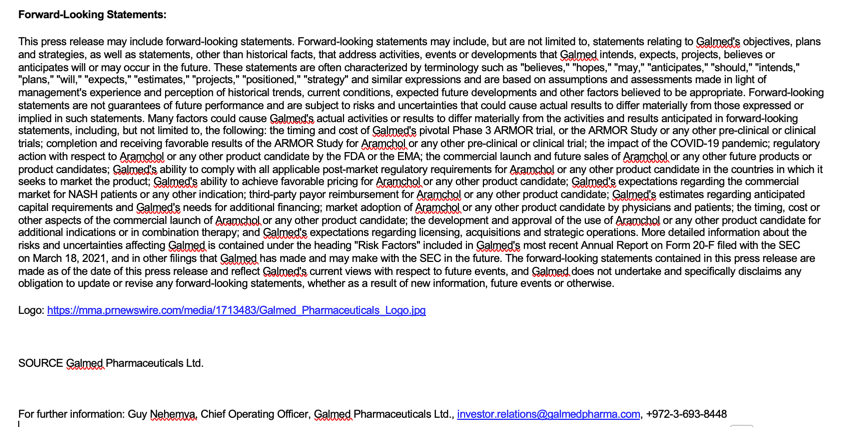


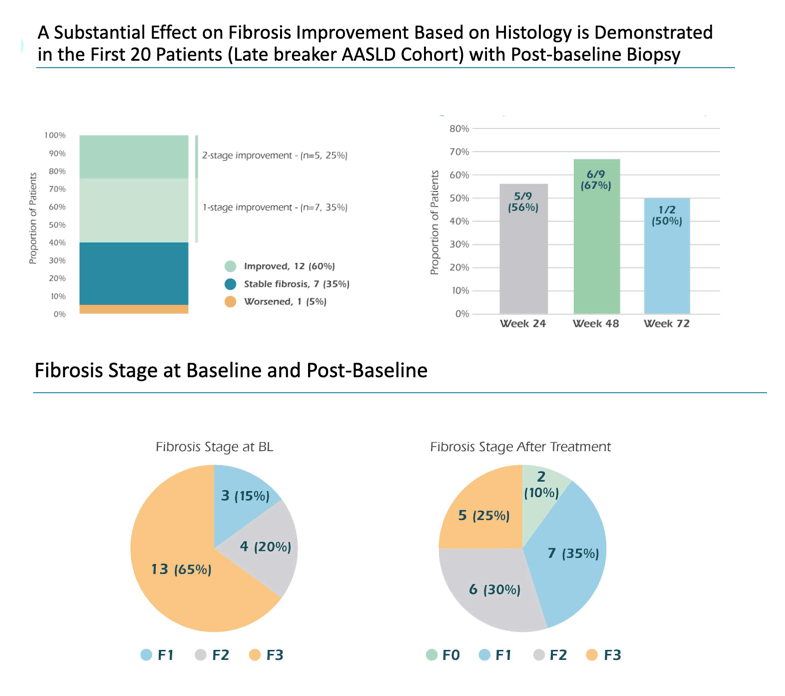
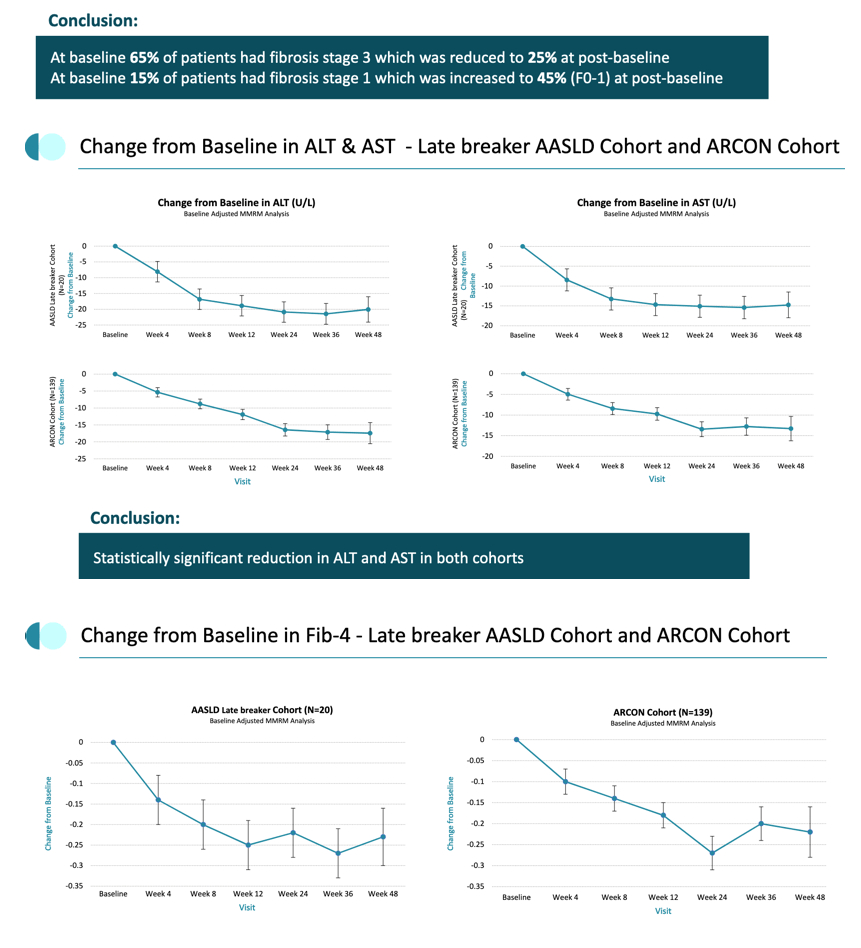
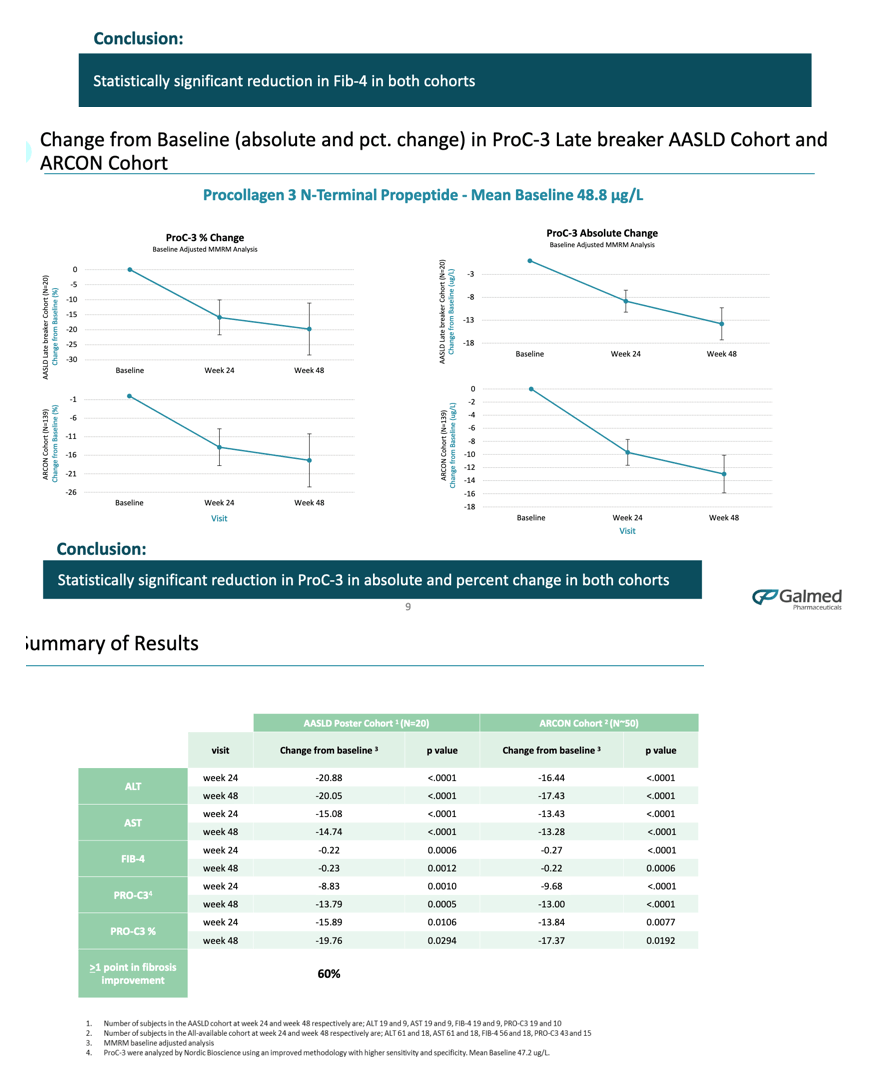
| |
| |
| |
|
|
|